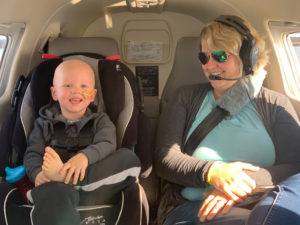In this edition’s safety report I would like to discuss the NASA ASRS Program – Aviation Safety Reporting System. There is an abundance of information online regarding this program, yet I wanted to touch upon some of the highlights. Most airlines have an in-house safety reporting process. Most often, the in-house reporting program also simultaneously files a NASA ASRS report. I worked very closely with this program for over two decades through ALPA (Air Line Pilots Association) and I can’t say enough about its importance in enhancing safety. This program has been an absolute positive game changer in the field of aviation safety and we should all be familiar with it, regardless of our level of pilot certification. Since this report is disseminated to you all electronically, I will also provide some hyperlinks/websites addresses to some essential information regarding this program.
Here are some highlights that I have experienced while working with our airline’s program:
* There is no necessity for culpability in order to file an ASRS report. In other words, you don’t have to have done something wrong in order to file a report. Any safety issue or concern warrants a report filing.
* There is no limit to how many reports you can file in your aviation career. To exaggerate you can conceivably file one on every flight you fly. There is a limit to certificate action protection timelines and I will discuss this further under the immunity concept.
* The FAA considers the filing of an ASRS report to be indicative of a constructive attitude towards safety. What I refer to as a safety disposition. Because the reporting is voluntary, NASA serves as an independent honest-broker with the FAA; separate from a certificate holder, regulator or employer. As such, it remains confidential (to encourage further reporting) and non-punitive assuming certain parameters are met, which I will discuss later.
* In your report narrative, make sure that you provide sufficient information. Don’t be cryptic. The chronological, sequential and honest description of your event/issue/safety concern is what qualifies you as an aviator with a safety disposition. Elaborate on the who, where, when, what and why.
There is an 8 minute video that highlights the main concepts. We all have 8 minutes. Please watch it. It can be found on this site, along with a summary of the program:
https://asrs.arc.nasa.gov/overview/summary.html
Let’s briefly discuss the immunity concept, which in my opinion is the epicenter of what makes this program so robust and the envy of aviation safety programs worldwide.
Paragraph 9. c. FAA Advisory Circular No. 00-46F
c. Waiver of Imposition of Sanction. The FAA considers the filing of a report with NASA concerning an incident or occurrence involving a violation of 49 U.S.C. subtitle VII or the 14 CFR to be indicative of a constructive attitude. Such an attitude will tend to prevent future violations.
Accordingly, although a finding of violation may be made, neither a civil penalty nor certificate suspension will be imposed if:
1. The violation was inadvertent and not deliberate;
2. The violation did not involve a criminal offense, accident, or action under 49 U.S.C. § 44709, which discloses a lack of qualification or competency, which is wholly excluded from this policy;
3. The person has not been found in any prior FAA enforcement action to have committed a violation of 49 U.S.C. subtitle VII, or any regulation promulgated there for a period of 5 years prior to the date of occurrence; and
4. The person proves that, within 10 days after the violation, or date when the person became aware or should have been aware of the violation, he or she completed and delivered or mailed a written report of the incident or occurrence to NASA.
In a past report we discussed the Threat and Error Management model (TEM). The ASRS reporting system can serve as a vehicle in the reporting of threats and errors.
What I have told thousands of crews and pilots. If you feel that you should be filing a report, then you should file one. Air Traffic Controllers have their own in-house program as well, as do most labor departments in professional aviation organizations.
This link is what you need in order to file an ASRS report : https://asrs.arc.nasa.gov/report/electronic.html
As mentioned in points 1 and 2, the ASRS report does not serve as a “get-out-of-jail card” for willful violations, criminal acts or disclosures of lack of competency or qualification.
Also, the question of the timeliness of a report filing allows some room for discretion. For example, if you were unaware of a deviation and a federal entity informs you of the deviation three weeks after the event, then the 10 day clock starts ticking after the moment you were notified of the event. Therefore your report will still be timely even though it is way past 10 days from the actual day of the deviation. You should address that fact in the narrative of the report.
I am certainly not an attorney, nor is this legal advice. Simply a summary of the excellent safety program that both NASA and the FAA have created, through the ASRS reporting system.
I hope you found this report helpful. Wishing you all the very best for the new year and thank you for all that you do for Angel Flight West.
In safety,
Alexi Stavropoulos
AFW Safety Officer
AlexiosS@angelflightwest.org
707-953-8947



























